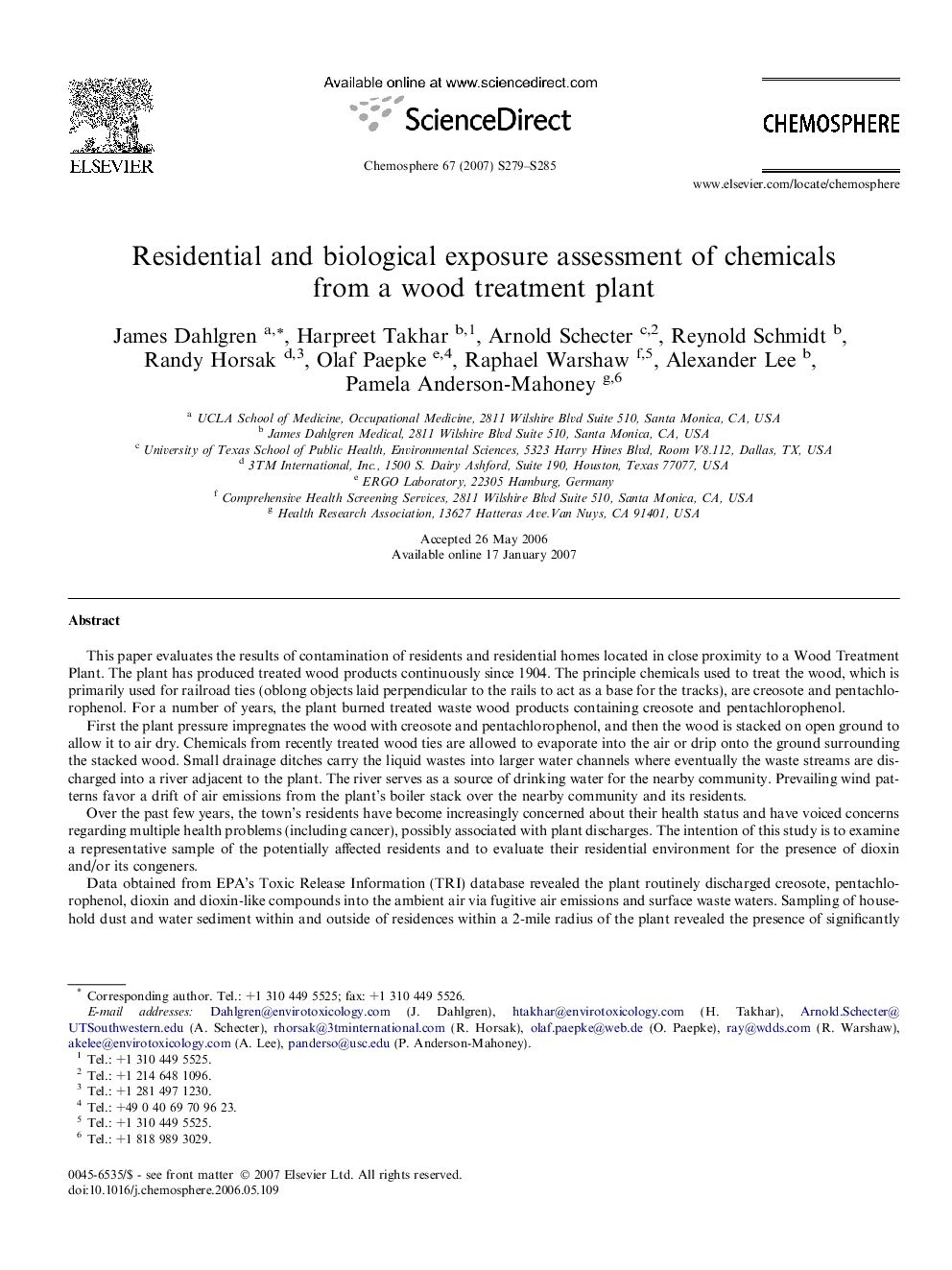| کد مقاله | کد نشریه | سال انتشار | مقاله انگلیسی | نسخه تمام متن |
|---|---|---|---|---|
| 4415151 | 1307737 | 2007 | 7 صفحه PDF | دانلود رایگان |

This paper evaluates the results of contamination of residents and residential homes located in close proximity to a Wood Treatment Plant. The plant has produced treated wood products continuously since 1904. The principle chemicals used to treat the wood, which is primarily used for railroad ties (oblong objects laid perpendicular to the rails to act as a base for the tracks), are creosote and pentachlorophenol. For a number of years, the plant burned treated waste wood products containing creosote and pentachlorophenol.First the plant pressure impregnates the wood with creosote and pentachlorophenol, and then the wood is stacked on open ground to allow it to air dry. Chemicals from recently treated wood ties are allowed to evaporate into the air or drip onto the ground surrounding the stacked wood. Small drainage ditches carry the liquid wastes into larger water channels where eventually the waste streams are discharged into a river adjacent to the plant. The river serves as a source of drinking water for the nearby community. Prevailing wind patterns favor a drift of air emissions from the plant’s boiler stack over the nearby community and its residents.Over the past few years, the town’s residents have become increasingly concerned about their health status and have voiced concerns regarding multiple health problems (including cancer), possibly associated with plant discharges. The intention of this study is to examine a representative sample of the potentially affected residents and to evaluate their residential environment for the presence of dioxin and/or its congeners.Data obtained from EPA’s Toxic Release Information (TRI) database revealed the plant routinely discharged creosote, pentachlorophenol, dioxin and dioxin-like compounds into the ambient air via fugitive air emissions and surface waste waters. Sampling of household dust and water sediment within and outside of residences within a 2-mile radius of the plant revealed the presence of significantly elevated levels of dioxins, principally octachlorodibenzo-p-dioxin (OCDD) and 1,2,3,4,6,7,8-hepta-CDD. Biomonitoring of 29 subjects identified the presence of significantly elevated chlorinated dioxins and furan levels (OCDD = 1049 ppt for exposed and 374 ppt for controls and 1,2,3,4,6,7,8-hepta CDD = 132 ppt for exposed and 45.1 ppt for controls). These levels are consistent with exposures to pentachlorophenol in this group of subjects. And they confirm the presence of unsafe levels of chlorinated dioxins in these persons.
Journal: Chemosphere - Volume 67, Issue 9, April 2007, Pages S279–S285